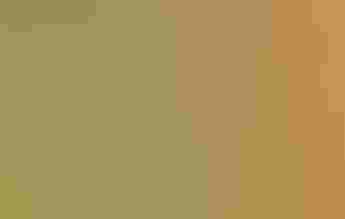
La página que intenta visitar sólo está disponible en inglés. ¡Disculpa!
The page you are about to visit is currently only available in English. Sorry!

You’ve probably seen hummingbirds darting among flowers to gather nectar, but did you know that hummingbirds eat spiders and tiny insects too?
Sugary liquids (like nectar and tree sap) and protein-rich insects (like aphids and gnats) both play important roles in a western hummingbird’s diet, explains Zach Hutchinson, a Community Naturalist with Audubon Rockies. And while there are many factors that affect what a hummingbird eats—from its species to where it’s located—it’s helpful to understand that a hummingbird’s diet can evolve during the season.
Just as humans may eat more carbs before a lengthy bike ride or get extra servings of protein when they’re nursing a baby or going through a growth spurt, hummingbirds may adjust what they eat for migrating, breeding, molting, and surviving cold weather.
Nectar is the rocket fuel that keeps a hummingbird’s high-speed metabolism up and running. It helps to:
With their racing metabolisms, hummingbirds need to refuel many times per day or they could risk starving.
Hummingbirds often will increase their nectar intake and quickly pack on weight before they migrate, so they can sustain themselves on their cross-continent journey. Hutchinson says hummingbirds require significantly more energy on colder days as well.
Nectar is essential for hummingbird survival. However, it’s only part of what hummingbirds eat in Colorado, Utah, and Wyoming.
Spiders and tiny insects give hummingbirds protein—as well as fats, electrolytes, and macronutrients—that they just can’t get from nectar alone, Hutchinson explains. These nutrients play a key role at different times of the season, like during breeding and molting.
For example, a female Broad-tailed Hummingbird (the most common hummingbird in the Rocky Mountain region) will catch gnats, aphids, spiders, ants, fruit flies, mosquitos, and other flying insects to feed and raise her chicks. Insect protein is essential for a chick’s healthy growth and development, including developing a skeletal system and growing feathers.
Adult hummingbirds—both males and females—will increase their protein intake during their annual feather molt, often starting in late summer. In southwest Utah, where hummingbirds will overwinter, molting can take place over the winter. So knowing what hummingbirds eat...
The best ways to feed hummingbirds in your own yard are to provide both protein and nectar sources. This means:
One person’s pest is a hummingbird’s treasure! Those aphids making an appearance on your plants are an important part of a hummingbird’s diet in the Rocky Mountain region. Those spiders that are doggedly forging webs are an excellent protein source for hummingbirds. Plus, hummingbirds will happily pluck insects from spider webs and use the webbing as nesting material.
Get comfortable with some insects and spiders in your landscape. You’re creating a hummingbird buffet that’s rich in protein and other essential nutrients.
Products and treatments that are designed to kill spiders, insects, weeds, and other landscape “pests” can affect the amount of food available for hummingbirds, alter their habitat, and in some cases, inadvertently sicken or kill birds.
If a product is identified as an insecticide, herbicide, or fungicide, avoid it. You’ll help improve the food available to hummingbirds.
Suckers and other fresh growth on woody plants can attract aphids, and aphid excretions—known as honeydew—can attract ants. Hutchinson says aphids and ants are good protein sources for our regional hummingbirds. He suggests thinking of these critters as “insect livestock” for hummingbirds. You’re making it easy for hummingbirds to eat in Colorado, Utah, and Wyoming.
Layers create a rich ecosystem for both insects and birds. The best layers include:
This diverse structure supports a variety of invertebrates, creating food for hummingbirds and other birds. The layers also offer shelter and nesting areas for hummingbirds as they migrate through our region.
Nectar fuels a hummingbird’s supercharged metabolism, and our region has a beautiful array of nectar-rich plants for hummingbirds.
In most of the Rocky Mountain region, we have migratory hummingbirds. They travel through Colorado, Utah and Wyoming at different times, so be sure to plant early-season, mid-season, and late-season flowers for hummingbirds.
Early-season flowers offer an important nectar source for our spring-arriving hummingbirds (like Broad-tailed Hummingbirds). The nectar boosts their energy and stored-up fats, so they have a better chance of surviving our spring snowstorms and cold spells.
Mid-season and late-season flowers help fuel hummingbirds that are migrating back to warmer climates for the winter (such as Rufous Hummingbirds).
The bonus for you? You’ll often see the same hummingbirds return to your yard year after year in search of those high-quality, sugary rewards.
Learn more about native plants and bird-friendly gardening with resources from Audubon Rockies’ Habitat Hero program.
If you’re looking for the best ways to feed hummingbirds, add native flowering plants with big nectar wells to your garden first. Plants are the best source of natural, high-quality nectar. Plant nectar contains dissolved sugars, the occasional protein-packed insect, and pollen that’s rich with fats, minerals, and proteins.
But, yes, you can supplement a hummingbird’s nectar supply with a well-maintained feeder. Just make sure you’re following hummingbird feeder best practices.